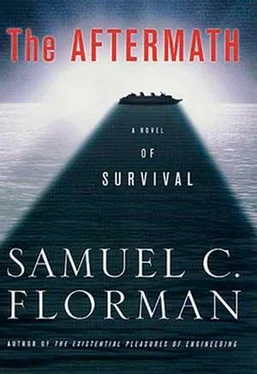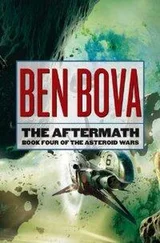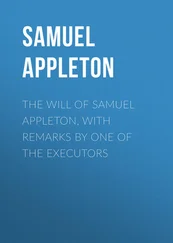Samuel Florman - The Aftermath
Здесь есть возможность читать онлайн «Samuel Florman - The Aftermath» весь текст электронной книги совершенно бесплатно (целиком полную версию без сокращений). В некоторых случаях можно слушать аудио, скачать через торрент в формате fb2 и присутствует краткое содержание. Город: New York, Год выпуска: 2001, ISBN: 2001, Издательство: Thomas Dunne books, Жанр: sf_postapocalyptic, на английском языке. Описание произведения, (предисловие) а так же отзывы посетителей доступны на портале библиотеки ЛибКат.
- Название:The Aftermath
- Автор:
- Издательство:Thomas Dunne books
- Жанр:
- Год:2001
- Город:New York
- ISBN:0-312-26652-9
- Рейтинг книги:5 / 5. Голосов: 1
-
Избранное:Добавить в избранное
- Отзывы:
-
Ваша оценка:
- 100
- 1
- 2
- 3
- 4
- 5
The Aftermath: краткое содержание, описание и аннотация
Предлагаем к чтению аннотацию, описание, краткое содержание или предисловие (зависит от того, что написал сам автор книги «The Aftermath»). Если вы не нашли необходимую информацию о книге — напишите в комментариях, мы постараемся отыскать её.
The Aftermath — читать онлайн бесплатно полную книгу (весь текст) целиком
Ниже представлен текст книги, разбитый по страницам. Система сохранения места последней прочитанной страницы, позволяет с удобством читать онлайн бесплатно книгу «The Aftermath», без необходимости каждый раз заново искать на чём Вы остановились. Поставьте закладку, и сможете в любой момент перейти на страницу, на которой закончили чтение.
Интервал:
Закладка:
“Oh yes,” said Gordon Chan. “If we lose our foundation in learning, we’ll really be back in the Stone Age. Then our descendants will have to spend hundreds of years—maybe thousands—regaining the knowledge that we inherited from our forebears.”
“The youngsters will do chores,” continued Healey, “especially when crops need harvesting. But they will have to understand that their primary responsibility is to study and to learn. And, Peter,” he said, looking intently at Mavimbela, “we want this to be the case with the poorest Zulu child as well as with the most advantaged among the whites.”
Not hearing any questions or objections, Healey continued: “I further propose that half the able-bodied workforce—in other words, one quarter of the total population—be assigned to cultivating food and caring for livestock. I know,” and here he addressed especially the Engineering Village contingent, “that in the United States, less than two percent of the people are farmers; yet they grow food for everybody else, with lots left over for export. But that means absolutely nothing when you think of our condition here today. We have—or had—large farms and cattle ranches that were run quite efficiently. But the mechanical equipment that was so vital to those operations is gone. So are the fertilizers, the stores of feed, and all the fine facilities that we used to boast about in the province’s public relations brochures. Even the small, fairly primitive homesteads are obviously less productive than they were. We’re reduced to poking at the earth with sticks, and harvesting such crops as there are with our bare hands. We absolutely must have half of our workers—a quarter of our people—out in the fields making sure that we have enough food to sustain ourselves.”
“Without objection, then, the plan is agreed to,” the chairman stated. There was no formal vote. The subcommittee began its work in consensus mode.
Millie Fox noted that the twenty-five hundred “Outlanders” did not fall into the same categories as the approximately twenty-five thousand surviving citizens of KwaZulu Natal. Specifically, in Engineering Village there were no full-time housekeepers looking after families. Members of the ship’s crew prepared food and drink for the group, and as for miscellaneous domestic chores, it was every man for himself. However, in the initial planning meeting, nobody wanted to get bogged down discussing such minutiae. The population figures were just rough approximations anyhow; and it would be a long while before anybody took the time and effort to work up a detailed census. So the subcommittee applied the Half and Half Doctrine somewhat arbitrarily by establishing the available workforce at fourteen thousand—slightly more than half the estimated total population—with seven thousand assigned to farms and ranches. This left another seven thousand to work on reconstruction and industrial development.
The agricultural operation would be headed by such senior farming and animal husbandry people as had survived, and would have the services of several professors and students from the Department of Horticultural Science of the Pietermaritzburg Campus of the University of Natal. The Engineering Village group also contained a number of prominent agricultural engineers who could be helpful. There were plenty of experienced workers, both from the large plantations and ranches, as well as from small family farms. Reports from the hill country contained good news about the number of fields and orchards that had survived. Also, the calendar was the survivors’ friend: it was January, the middle of the summer in South Africa. Crops were ripening, and thousands of cattle and sheep grazed nearby.
Next, the subcommittee agreed that the leaders of the agricultural enterprise should reassign some of their workers, as soon as feasible, from tilling the fields to secondary food-related operations.
The vast field of technology known as “food processing” was taken for granted by many Westerners used to living in a high-tech culture and buying food in a supermarket. But these vital activities include milling grain, salting meat, cooking and canning, brewing and refining, pressing oil from olives or peanuts or soybeans, pickling, cheesemaking, baking, pasteurizing, packaging and storing, obtaining and preparing salt and spices, and so forth.
Also, at the earliest possible time, some of the agricultural workers were to be assigned to producing and applying fertilizer. This was another job not properly understood or appreciated by city folks, even many engineers. Each new crop takes chemicals from the earth—primarily, nitrogen, phosphorus, and potassium—and these chemicals must be replaced if a healthy soil is to be maintained. Nitrogen is plentiful in the air we breathe and can be captured by combining it with hydrogen to form ammonia. But, pending the development of a primitive chemical industry, the survivors would have to obtain their nitrogen from animal manure, slaughterhouse wastes, or recycled garbage. Phosphorus can be acquired from phosphate rock or bones or as a byproduct from slag when smelting phosphatic iron ore. Potassium is most readily obtained by mining potash deposits. If such deposits are not available, it is possible to burn vegetable wastes, such as palm leaves and banana peels, then boil the ashes in a pot and evaporate the solution. Hence the word “potash.” This substance is also useful in the manufacture of soap, lye, glass, and many other products.
As for livestock, the tending, slaughtering, and butchering of animals would have to be supplemented by shearing, tanning of hides, and harvesting of other useful animal products.
Some of the engineers shifted restlessly during this “meat and potatoes” discussion, as one electronic wizard referred to it. But the members of the Joint Planning Subcommittee were agreed that everything begins in the fields. A secure food supply is the sine qua non of a vigorous civilization.
One of the Ulundi delegation observed that a small fishing enterprise had been established, using the Queen of Africa lifeboats, which came equipped with hooks and lines. Several Inlanders had joined members of the Queen’s crew in fabricating nets and additional gear and in trying their luck. The subcommittee estimated that about fifty people could usefully be assigned to the task, and endorsed the activity accordingly. The prospective catch, of course, would be dependent upon how much the acid rain fallout had fouled the waters.
“So much for food,” Alf Richards said, rubbing his hands together with satisfaction. “What’s next?”
“Not so fast, please,” Harish Kahar interjected. “In the absence of a free market, who will decide which crops are selected for cultivation? There are questions of nourishment and individual taste, perhaps even some religious considerations.”
“Please, Harish,” Richards said, trying not to show his impatience. “If we try to micromanage every operation, we’ll never get anything done. Let’s leave that to the specialists, unless they have disputes that they can’t settle among themselves. As for me, I’ll be happy to eat whatever the hell pops out of the ground or the sea.”
Kahar did not look pleased, but he acquiesced. “All right then,” he said. “The logical next topic is water.”
By all indications, there was throughout the Ulundi Circle an ample supply of good water—rivers, lakes, and subsurface aquifers, plus, so far, adequate rain. But distribution was something else again. Immediately after the Event, members of each community had no choice but to carry water from the nearest fresh source—lake or river or well—in primitive containers. For the ship’s survivors, the dining-room workers had handled this chore with efficiency and dispatch. The next step in this process would be to repair such networks of reservoirs, aqueducts, and pipes as had existed, and to plan and build new ones. Irrigation for agriculture was also an important consideration.
Читать дальшеИнтервал:
Закладка:
Похожие книги на «The Aftermath»
Представляем Вашему вниманию похожие книги на «The Aftermath» списком для выбора. Мы отобрали схожую по названию и смыслу литературу в надежде предоставить читателям больше вариантов отыскать новые, интересные, ещё непрочитанные произведения.
Обсуждение, отзывы о книге «The Aftermath» и просто собственные мнения читателей. Оставьте ваши комментарии, напишите, что Вы думаете о произведении, его смысле или главных героях. Укажите что конкретно понравилось, а что нет, и почему Вы так считаете.












